2.55, 1955
BOY, 2011
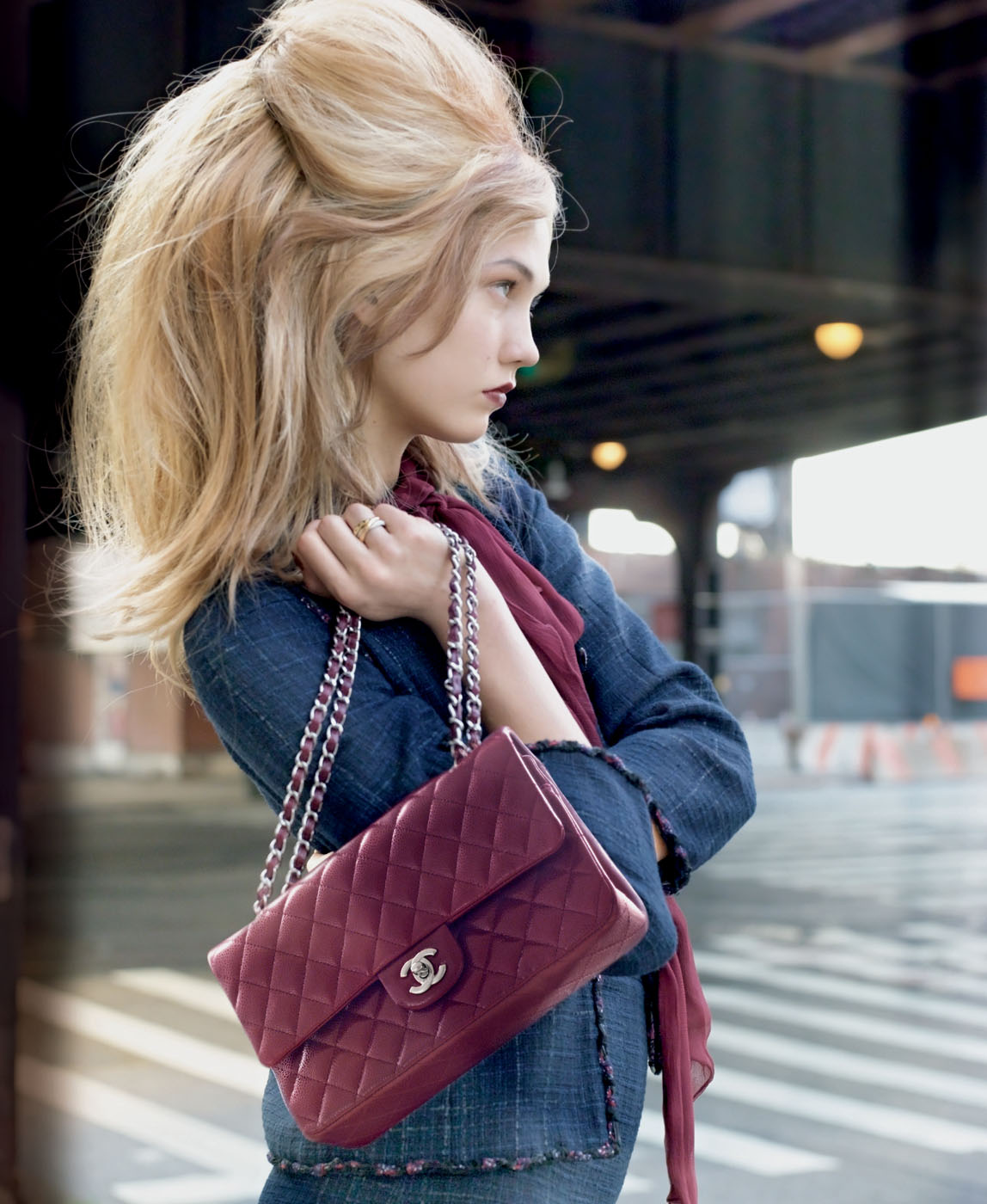
Karlie Kloss with a burgundy Chanel 2.55, Vogue, August 2010.
RM/Trunk Archive
The cultural impact of Chanel—as a house, a brand, a story, and a history—is unparalleled in the accessories world. People know there’s a Coco behind Chanel and they recognize her codes: the LBDs, the pearls, the camellias, the two-tone ballet flats, and the tweed bouclé jackets. They resonate solidly throughout the world as a visual vocabulary that is Chanel. And prime among those Chanel pillars is the quilted 2.55 and its update, Boy.
The original design, created in 1929, liberated women in the same way Chanel’s jersey dresses and tweed jackets offered an escape from hobble skirts and corsetry. By adding thin straps, inspired by those of soldiers’ bags that you could sling over your shoulder, Chanel freed up the hand. The iteration we’re familiar with today dates to February 1955, when she resurrected and updated the style as part of her postwar comeback; the bag’s name stems from its date of rebirth.
There’s a story behind every detail of the 2.55—from the burgundy lining, which represents the uniforms at the Aubazine convent where she grew up, to the gold chains inspired by those the nuns wore to hold their keys, to the front flap pocket where she allegedly placed her love letters. The iconic diamond quilting comes from her love of equestrian culture and jockey jackets, though some sources point to the cushions in her apartment, others to the stained-glass windows at Aubazine. The slim interior lipstick pocket was equally personal, as Chanel never went anywhere without her red lipstick.
Since taking over the design direction of Chanel in 1983, twelve years after Mademoiselle’s death, Karl Lagerfeld has updated the classic 2.55. He replaced the original rectangular turnlock—known as the Mademoiselle Lock, an amusing reference to the fact that Chanel never married—with one flaunting the double-C logo. And he kept the 2.55 going strong, generating new takes season after season—hot pink, denim, embroidered, terry cloth, covered in 1970s-style crochet. There are also plenty of versions cut from that house staple tweed, which Chanel liked extra nubby, even though the irregularities were considered flaws in her day. In 2005 Lagerfeld reintroduced the original in celebration of its fiftieth anniversary.
The Boy redefines the 2.55 for a younger audience. It features the double-C logo atop a rectangular metal clasp and a front flap that goes all the way to the bottom, unlike the 2.55, which stops roughly two-thirds of the way down. The rest of the codes are there: the chain link; the East-West rectangular shape; and the quilting, with three additional quilted “stripes” bordering the edges. There’s storytelling magic here, too. The elegant polo player “Boy” Capel was Chanel’s great love and muse until he died in a car accident at age thirty-eight in 1919.
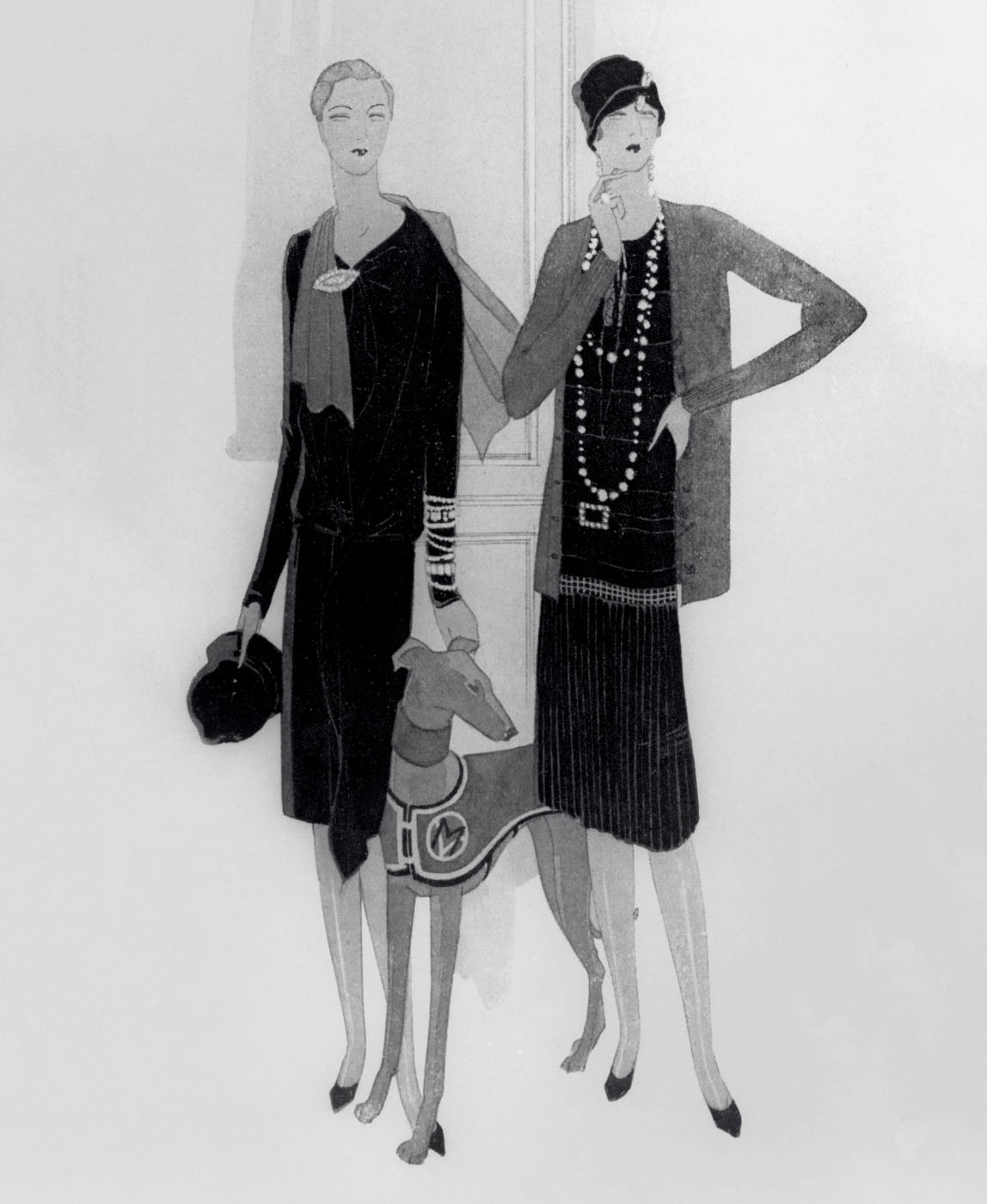
Dress designs by Chanel. Illustrations from Vogue, April 1927.
Archives Charmet/Bridgeman Images

Chanel advertisement, 1980s.
Advertising Archive/Courtesy Everett Collection
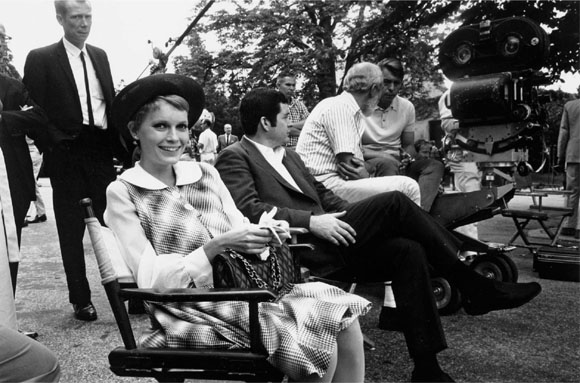
Mia Farrow on the set of Rosemary’s Baby, 1967.
Santi Visalli Inc./Getty Images
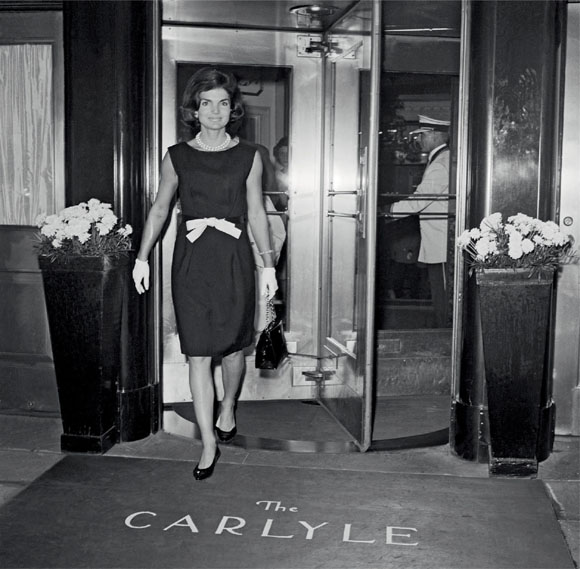
Jacqueline Kennedy leaving the Carlyle Hotel, New York City, March 1962.
Bettmann/Getty Images
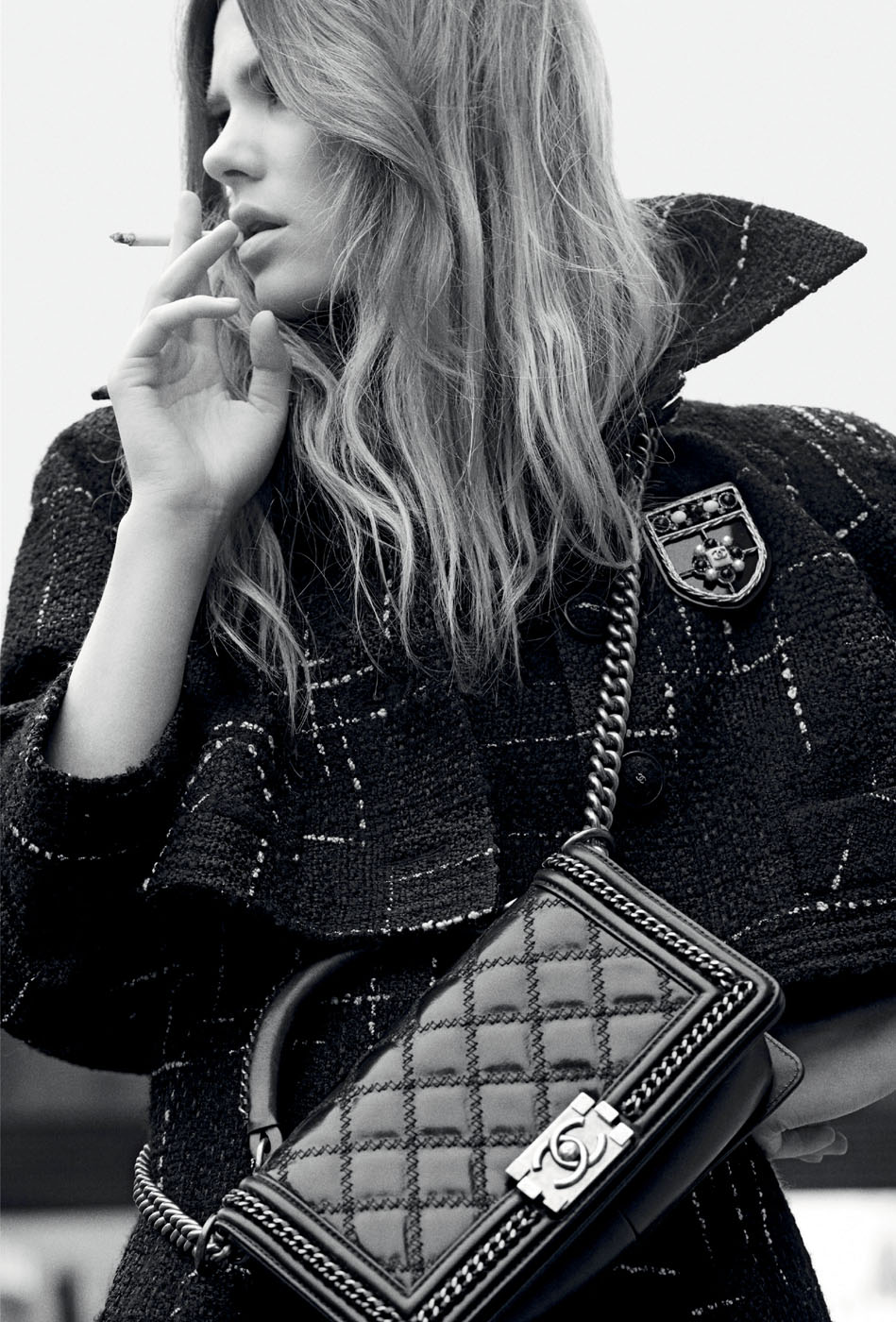
Boy bag, Chanel, Numéro Tokyo, July 2015.
Regan Cameron/Art & Commerce.
“Luxury is a necessity that begins where necessity ends.”
—COCO CHANEL, from The World of Coco Chanel: Friends, Fashion, Fame by Edmonde Charles-Roux, 2005
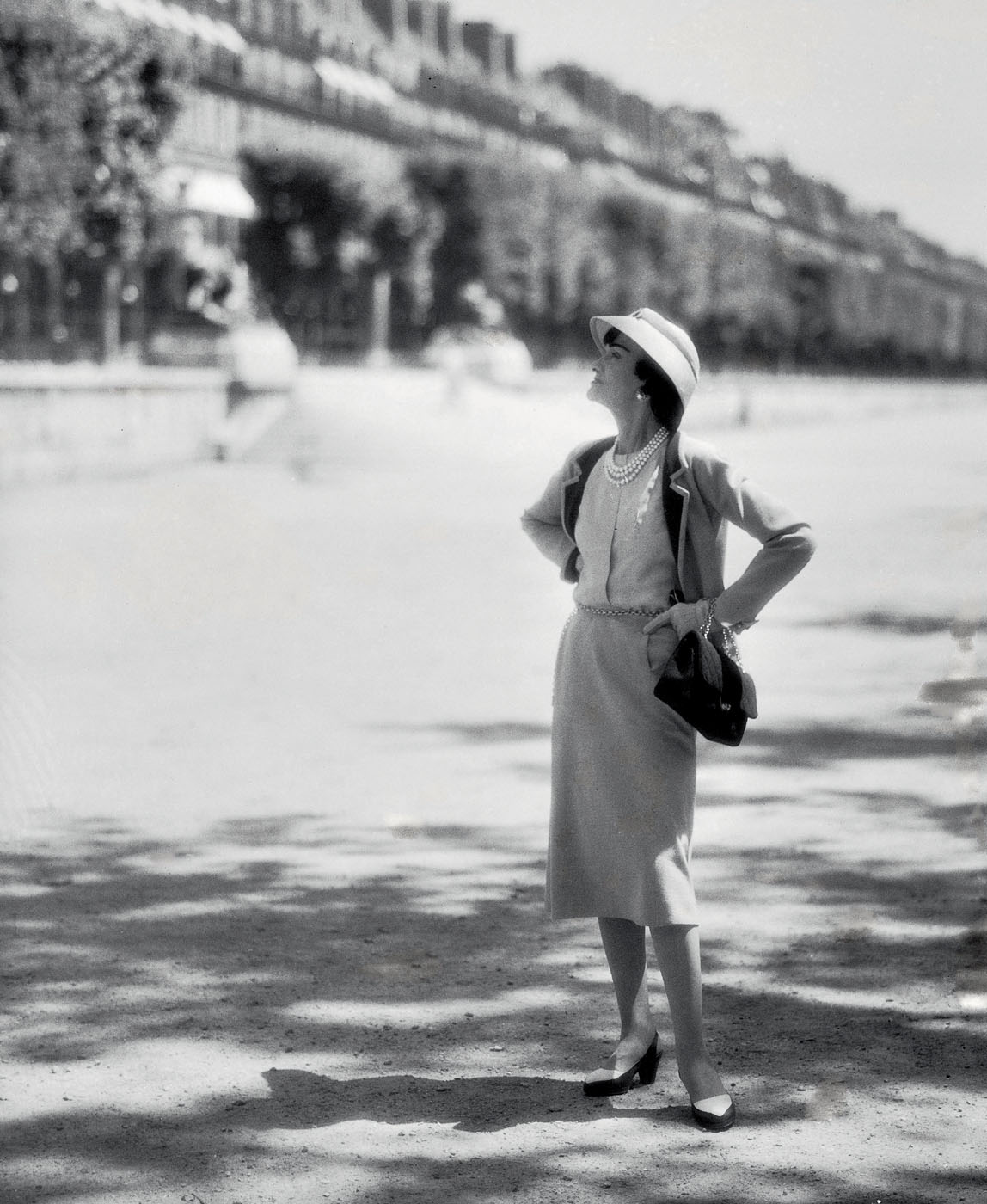
Coco Chanel in the Tuileries Garden, Paris, September 1957.
Willy Rizzo/Paris Match/Getty Images